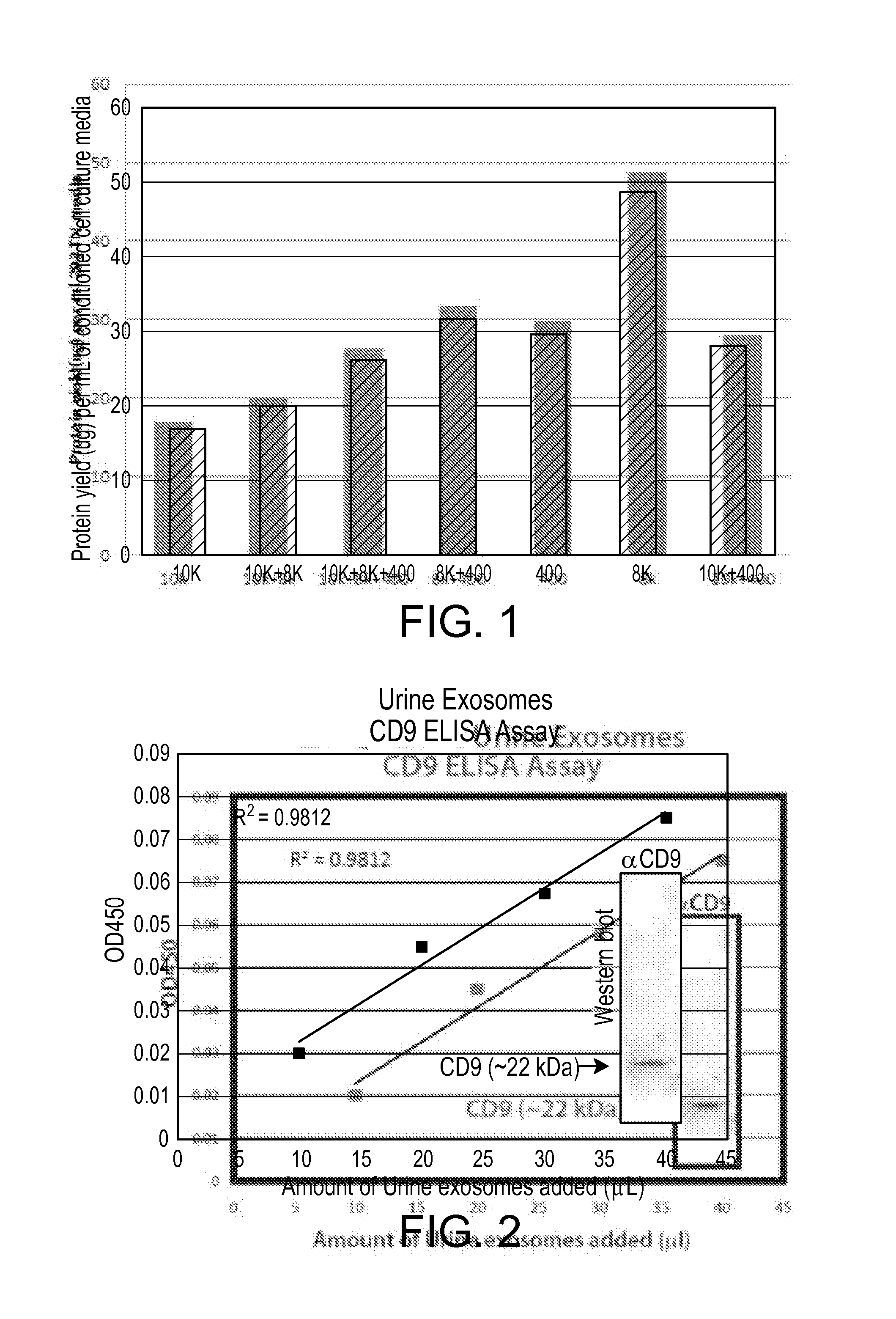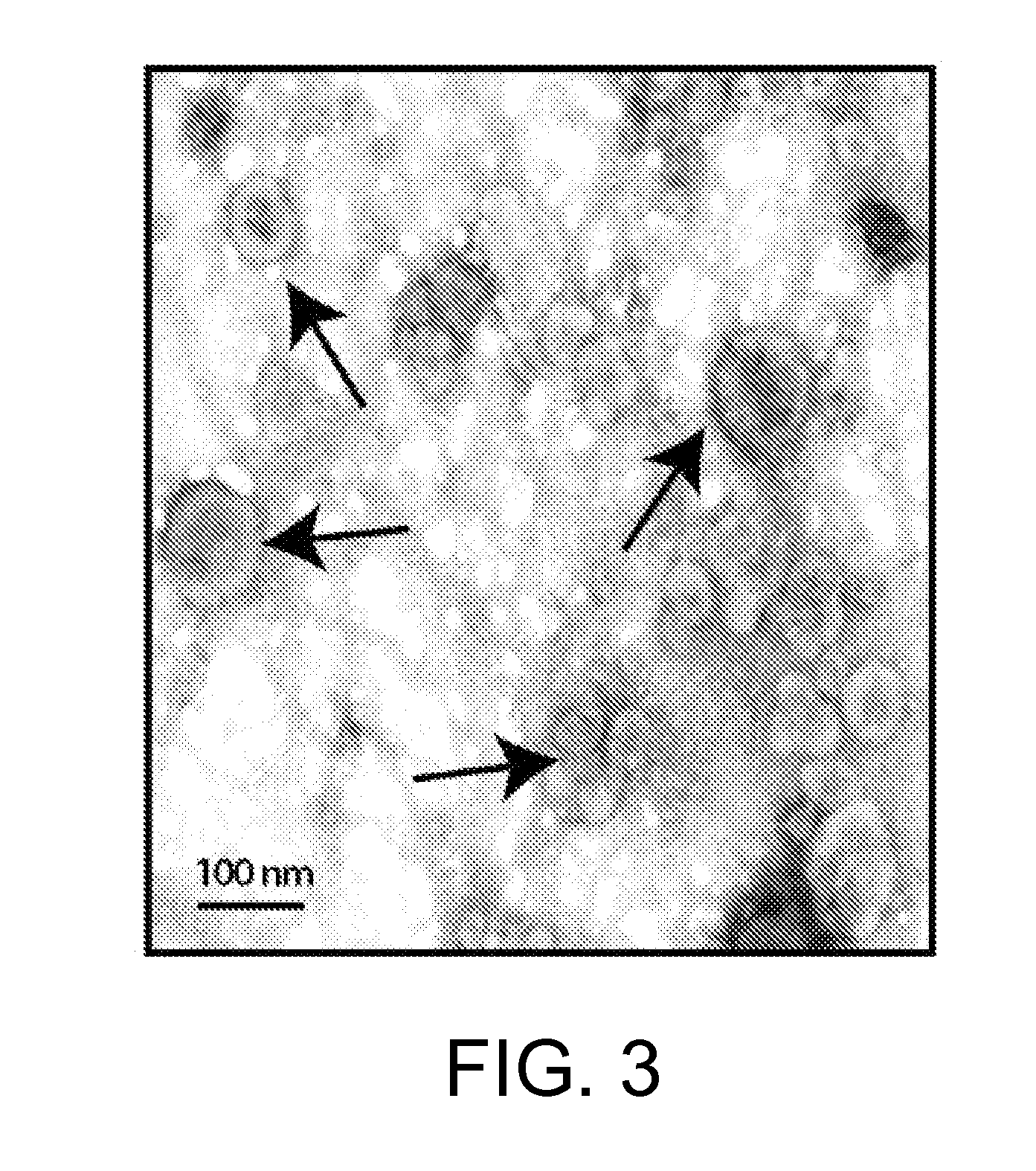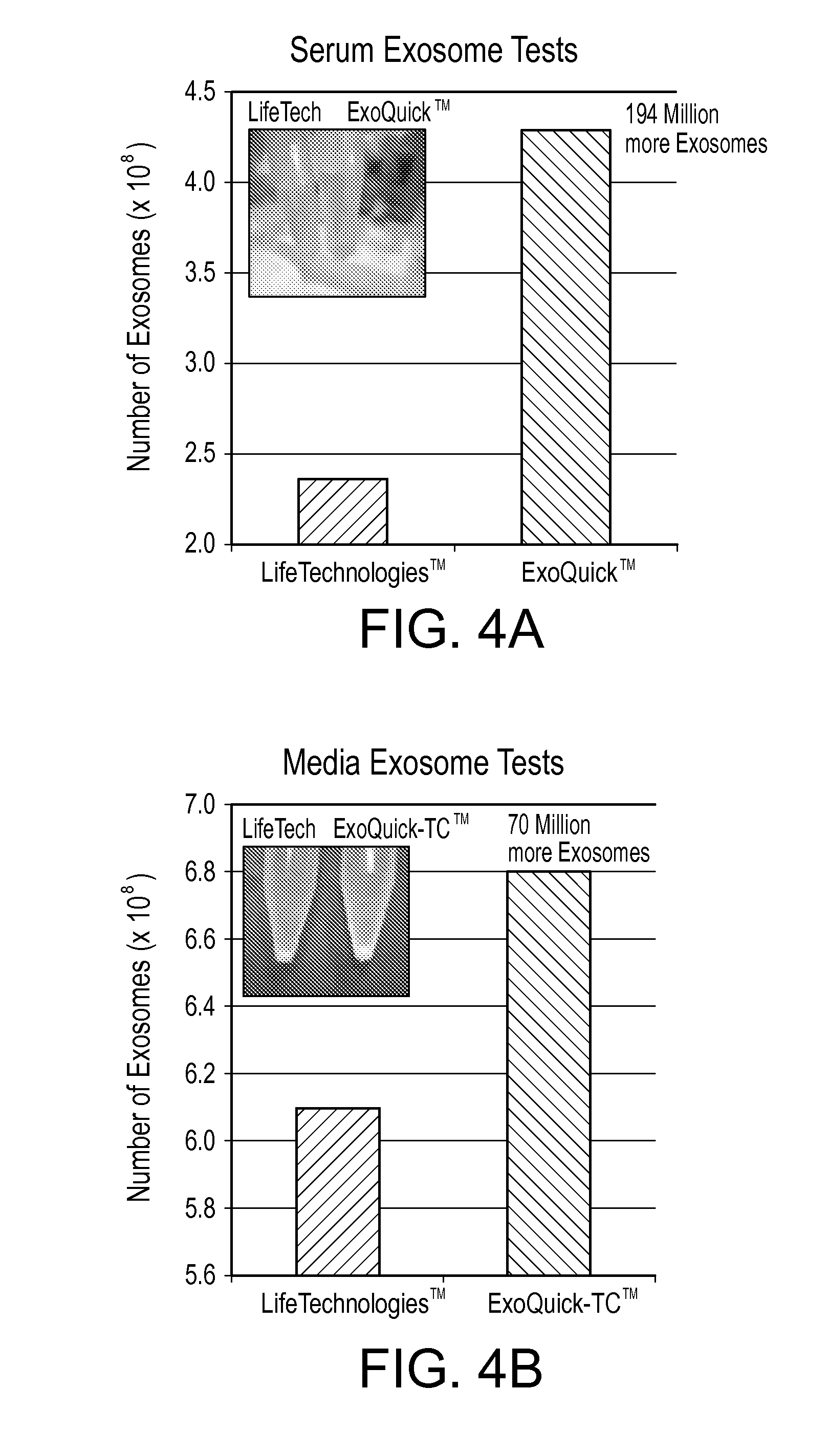Methods for microvesicle isolation and selective removal
a technology of microvesicles and selective removal, applied in the field of cell biology, can solve the problems of unresolved size distinction, other technical challenges, and the inability to efficiently isolate microvesicles from various sources, and achieve the effect of rapid and inexpensive isolation of microvesicles
- Summary
- Abstract
- Description
- Claims
- Application Information
AI Technical Summary
Benefits of technology
Problems solved by technology
Method used
Image
Examples
example 1
Development of Novel Systems for Isolation of Circulating Microvesicles
[0121]In an effort to develop new and improved methods for the isolation of circulating microvesicles, including exosomes, experiments were undertaken to test new approaches to microvesicle isolation.
[0122]Exosomes have been reported to have diameters ranging anywhere from about 40-200 nm. Lentivirus particles have an average diameter of about 80 nm, a size that is within the estimated range of exosome size. Formulations of polyethylene glycol (PEG-6000) had been previously used to precipitate and concentrate lentiviral particles from conditioned cell culture medium (Lewis and Metcalf, Applied and Environmental Microbiology, Vol. 54, No. 8 (1988). Because exosomes have similar diameters to a lentiviral particle, it was hypothesized that PEG formulations might be used to isolate exosomes from conditioned cell culture media that had been used to culture exosome-producing cell lines in vitro, and additionally, may a...
example 2
Isolation of Microvesicles from Urine and Western Blotting Verification
[0133]In this example, the ability of the a precipitation solution containing PEG-8,000 to precipitate and isolate microvesicles from human urine was tested, and the verified using western blotting using a known membrane marker.
[0134]Ten milliliters of normal human urine was combined with 2 ml PEG-8,000 precipitation solution, incubated for 16 hours at 4° C., and centrifuged at 1,500×g for 30 minutes. In some trials, a BECKMAN COULTER™ INC., Allegra™ 6R centrifuge with a swinging bucket rotor was used at a speed of 3,000 rpm producing 1,500×g relative centrifugal force. The resulting pellet was resuspended 175 uL PBS.
[0135]There are protein markers that are known to be abundantly associated with exosomes, including CD63, CD9, CD81 and Hsp70. The abundance of the CD9 protein marker in the resuspended pellet was analyzed by ELISA assay and Western blotting.
[0136]A) ELISA
[0137]Increasing amounts of the exosome suspe...
example 3
Exosomes Isolation from Urine and Analysis by Electron Microscopy (EM)
[0140]In this example, the ability of a PEG-8,000 precipitation solution to precipitate and isolate microvesicles from human urine was tested, and then verified using EM visualization.
[0141]Human urine containing exosomes was centrifuged at 3000×g and 10,000×g for 15 minutes. The supernatant was filtered through a 0.22 μm filter. PEG-8,000 precipitation solution was added to the urine supernatants, and the mixture was refrigerated at 5° C. overnight. Following incubation, the mixture was centrifuged at 1500×g, and a pellet was resuspended 1:10 in sterile PBS.
[0142]Formvar / carbon-coated nickel grids were incubated on drops of 0.1% poly-L-lysine for 5 minutes, rinsed by water and dried. Freshly prepared grids were placed on top of exosome drops and incubated for 10 minutes to adsorb exosomes. The grids were washed on several drops of PBS and fixed with 2.5% glutaraldehyde in 0.1 M cacodylate buffer for 15 minutes.
[0...
PUM
| Property | Measurement | Unit |
|---|---|---|
| average molecular weight | aaaaa | aaaaa |
| weight concentration | aaaaa | aaaaa |
| weight concentration | aaaaa | aaaaa |
Abstract
Description
Claims
Application Information
 Login to View More
Login to View More - R&D
- Intellectual Property
- Life Sciences
- Materials
- Tech Scout
- Unparalleled Data Quality
- Higher Quality Content
- 60% Fewer Hallucinations
Browse by: Latest US Patents, China's latest patents, Technical Efficacy Thesaurus, Application Domain, Technology Topic, Popular Technical Reports.
© 2025 PatSnap. All rights reserved.Legal|Privacy policy|Modern Slavery Act Transparency Statement|Sitemap|About US| Contact US: help@patsnap.com



